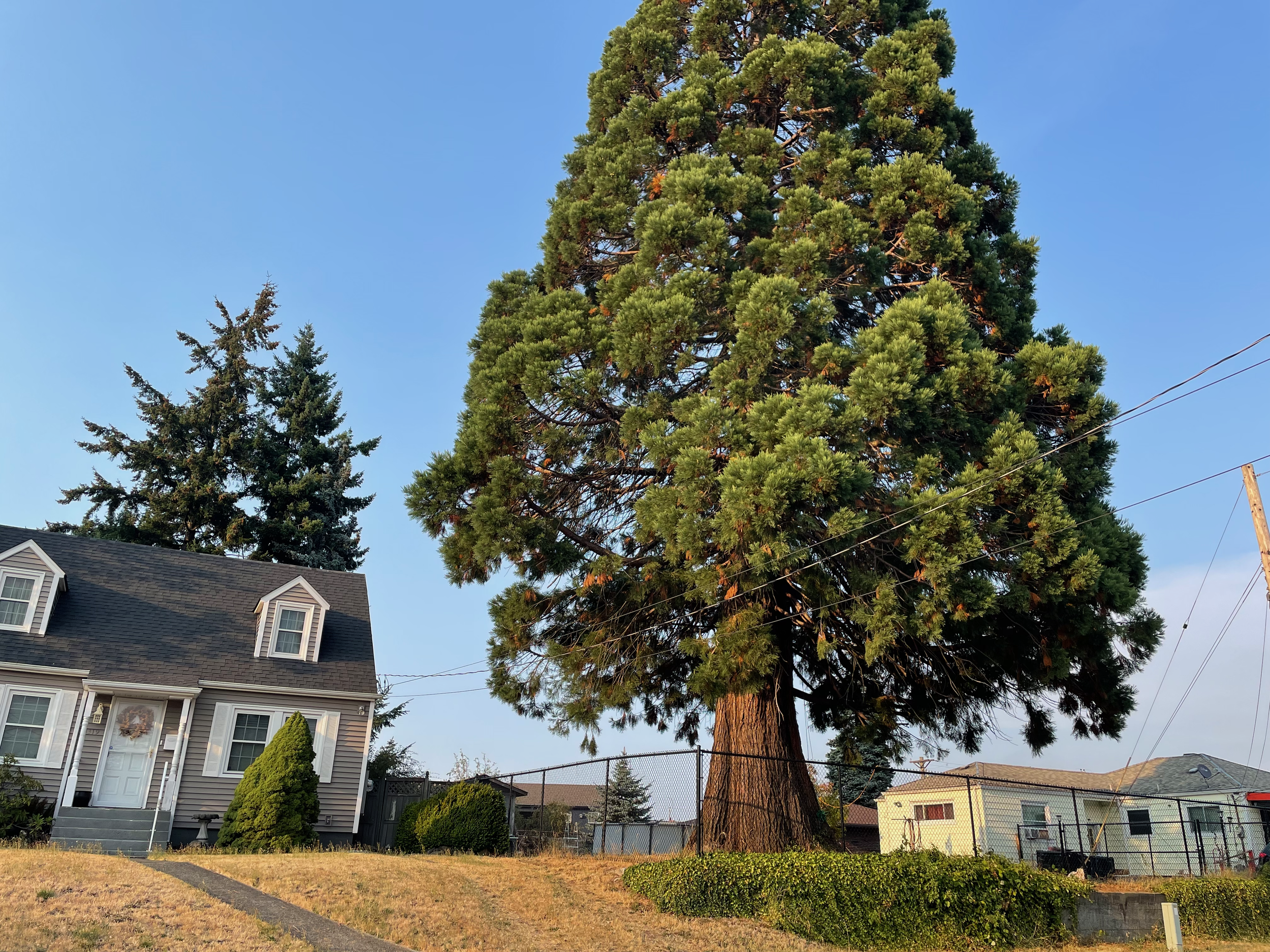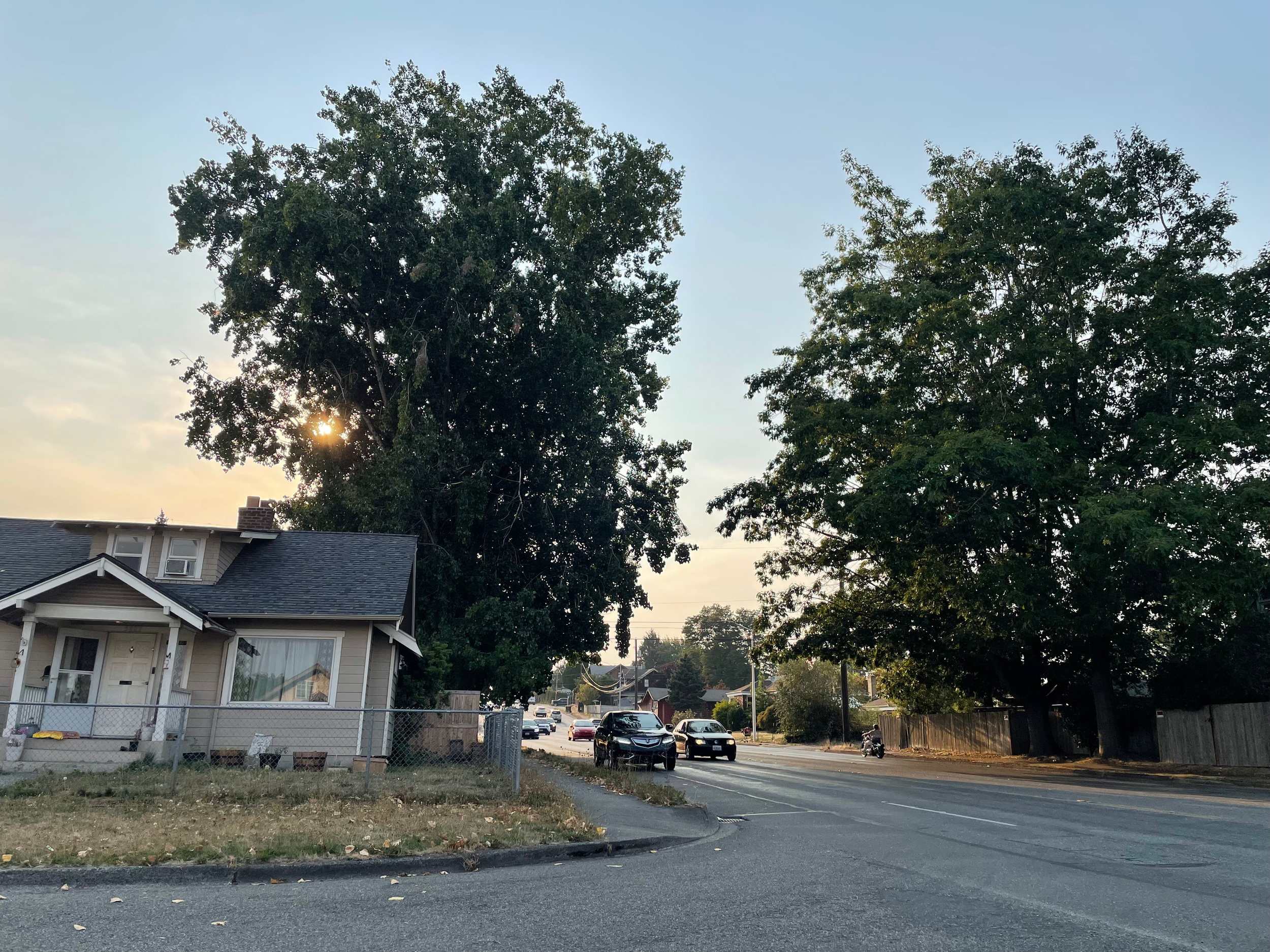Why Tacoma’s Trees Won’t Be Protected Anytime Soon.
Home In Tacoma Phase Two was passed by Tacoma City Council on November 19, 2024. Almost a year later and trees on private property remain unprotected. What happened?
It is October in Tacoma. The days are getting shorter. The leaves are beginning to fall. And trees on private property still have no protections.
Around this time last year, I was pinning my hopes on Home in Tacoma, the years-long update to the Tacoma Municipal Code that finally eliminated single-family zoning and created permissions for more housing in our neighborhoods.
Map showing new updated Urban Residential zoning districts. Source: City of Tacoma.
What did that have to do with trees?
Well, when cities add housing, there is less space for trees. By expanding buildable space on formerly single house lots, Tacoma was at risk of reducing its tree canopy even further. That’s why the City Council directed the Planning Commission to make recommendations for updating the landscaping code (the laws covering how and where trees are allowed or required) alongside the land use code (the laws covering what kinds of things can be built in certain neighborhoods).
We at Tacoma Tree Foundation spoke out in favor of Home in Tacoma in its draft form because we thought that the City was finally making significant strides to address the housing crisis and the tree canopy crisis at the same time. We thought the draft code updates struck an acceptable balance by creating guidance on how much space must be reserved for trees, when a tree could not be cut down, and what penalties would need to be paid if someone removed a tree without a permit. By creating a permitting process for tree removal on private property, the City was finally acknowledging that residential trees are lifesaving public infrastructure that need to be protected and incentivized.
City of Tacoma resource for estimating “Tree Credits” on new development sites. Source: City of Tacoma.
And then the amendments started rolling in…
When the dust had settled, the development lobby had gotten everything they wanted. Yes, there were new design standards that required developers to reach a certain percentage of tree canopy on residential lots. And that is great! Anyone following the rules will have to design and build with trees in mind.
But the City Council created so many last-minute loopholes that the design standards hardly matter.
They reduced the required tree canopy percentage in every zone.
They created a “tree bank” option for developers to plant trees off site instead of on the lot they are developing.
They allowed property owners to ignore tree requirements if they claimed to live on site and make less than 150% of the area median income.
And finally, the biggest concession of all: the ironically named “Tree Preservation for Non-Development Sites.”
Here is the actual amendment language:
Remove all proposed Tree Preservation regulations which are intended to apply to property outside the land use permitting process and refer those proposed regulations to the Council’s Infrastructure, Planning and Sustainability Committee to immediately initiate a separate, broader policy discussion about expanding the City’s Urban Forestry Program and further implementation of the Urban Forest Management Plan, including examination of:
Tree preservation standards citywide (beyond just the UR zones)
Appropriate City resources for tree planting and maintenance
Regulatory and non-regulatory tools for tree preservation
With this single amendment, Tacoma City Council voted not to protect trees on private property, anywhere in the city. By making Home in Tacoma only applicable at the “time of development,” they put a stamp of approval on the status quo. With no protections in the code, residential lots can be cleared of any or all trees as long as the owner hasn’t already filed for a development permit. Now, once you file for a development permit, you have to follow the new guidelines—show how you’ll achieve the new tree canopy standards through the retention and/or planting of trees, keep any trees over 24 inches in diameter at breast height unless they significantly limit reasonable development of the site, and so on. But the new code doesn’t care whether you cut all your trees down first and ask for the permit later!
These mature trees were cut down in my neighborhood to make way for a new apartment building.
If you want to know why exactly these amendments were introduced (and passed unanimously!), you will need to ask your city council members.
Single family lots like this one could see new development in the upcoming years. The fate of big trees as a result remains undecided.
But since it has been almost a year, we are focusing on the path forward. As part of their above promise to “immediately initiate a separate, broader policy discussion” about urban forestry, Tacoma City Council has already adopted a resolution on urban forestry actions and begun to follow it. Resolution number 41682 was adopted on May 13, “directing the City Manager and Planning Commission to advance a phased set of actions aimed at creating a thriving urban forest in Tacoma by expanding the City’s Urban Forestry Program and advancing implementation of the Urban Forestry Management Plan.”
The City Council Action Memorandum has the full details of what and the Planning Commission will be considering. The categories include public engagement, budget proposals, and code development, and the topics range from tree preservation on private property to increased maintenance of trees on public property.
A pessimistic view of the situation would be that there are no firm commitments in this resolution, only more plans to study the problems over several years, and that ongoing budget challenges combined with taxpayer sentiment will make further tree code updates unlikely.
An optimistic view is that our elected officials neglected to begin regulating trees on residential property so that they could implement tree regulations city-wide (on all property types). We may get a more comprehensive tree policy update in the end.
In either case, making progress in the next five years will require more people to speak out in favor of common-sense tree policies in Tacoma, along with urban forestry funding that is at least on par with other cities our size. Any investments we make now will pay dividends in the future—for the health of our environment and our own quality of life.
To find out more about where we’re going and how we get there, we invite you to attend the 4th Annual State of the Urban Forest event on November 13! You’ll hear directly from the City of Tacoma about new tree canopy data collected by the Urban Forestry Program, the City’s five-year plan to improve urban forest outcomes, and how TTF is supporting communities to ensure today’s trees are here tomorrow. Join us!







